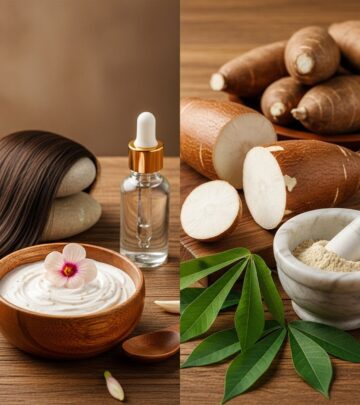10 Effective Home Remedies for Winter Skin Care
Combat dry, flaky skin and restore your natural glow with these proven home remedies for healthy winter skin.

Winter brings cozy evenings and festive cheer, but for many, it also means battling dryness, itchiness, and flaky skin caused by cold air and low humidity. As the temperature drops, so does your skin’s ability to retain essential moisture. The good news: you can maintain soft, hydrated, and radiant skin with simple, natural ingredients found in your kitchen. Here, we unravel 10 home remedies for winter skin care—supported by science and tradition—to help you breeze through the chilly months with a glowing complexion.
Why Does Skin Dry Out in Winter?
Low temperatures and decreased humidity sap moisture from skin, weakening the natural barrier. Indoor heating and hot showers further aggravate dryness and can lead to itching, irritation, and even cracks. Ensuring adequate hydration externally and internally becomes essential for overall skin health.
Home Remedies for Winter Skin Care
1. Papaya and Honey Pack
Ripe papaya is loaded with antioxidants that help in reducing signs of aging, while honey is a natural humectant that attracts and retains moisture, making it ideal for dry, parched skin.
- You will need: 1 ripe papaya, honey
- Method: Mash the papaya and blend with honey to form a thick paste. Apply evenly to the face, neck, hands, or feet—focus on dry areas. Leave it on for 20 minutes, then rinse off with lukewarm water.
- Frequency: Twice a week.
2. Milk and Almond Pack
Almonds contain vitamin E and other bioactive compounds that nourish and repair skin barriers. Milk provides lactic acid and natural fats that deeply moisturize and smooth.
- You will need: 1-2 tablespoons almond powder, 2-3 tablespoons fresh milk
- Method: Mix almond powder with milk to create a thick paste. Apply to dry areas and let it sit for 10 minutes. Wash off with water.
- Frequency: 1 to 2 times per week
- Caution: Avoid if allergic to milk or nuts.
3. Yogurt and Honey Pack
Yogurt contains probiotics and natural enzymes that gently exfoliate while soothing winter-inflamed skin. Combined with honey, this mask offers deep hydration and helps brighten the complexion.
- You will need: 2 tablespoons yogurt, 1 tablespoon honey
- Method: Mix yogurt and honey. Apply to face and dry patches, leave for 15–20 minutes, then rinse.
- Frequency: Twice weekly.
4. Glycerin
Glycerin is a time-tested humectant, drawing moisture to the skin and forming a protective film to prevent dehydration in harsh winter air.
- You will need: Pure glycerin
- Method: Dab a small amount on problem areas. Leave overnight; no rinsing required.
- Frequency: Daily as needed.
5. Petroleum Jelly
Petroleum jelly acts as an occlusive layer, trapping moisture and rapidly soothing cracked or extremely dry skin. Dermatologist-recommended for hands, heels, elbows, and lips.
- You will need: Petroleum jelly
- Method: Apply a thin layer to dry or cracked regions, ideally after bathing or before bed.
- Frequency: Daily or as needed.
6. Coconut Oil
Virgin coconut oil is rich in bioactive compounds and essential fatty acids, making it a superior natural moisturizer. It prevents moisture loss, repairs skin barrier, and imparts a subtle glow.
- You will need: Virgin coconut oil
- Method: Warm slightly and massage into dry areas until absorbed. No need to wash off.
- Frequency: At least once daily.
User tip: Some prefer mixing coconut oil with beeswax for a more protective balm, though it may be heavy for oily skin types.
7. Lemon and Honey
Lemon is packed with antioxidants and vitamin C, while honey provides unmatched hydrating benefits. This combo is especially useful for dull, itchy patches, but it should be avoided on irritated or broken skin.
- You will need: Juice from ½ ripe lemon, honey
- Method: Mix lemon juice with honey. Smooth a thin layer onto affected areas and leave for 15 minutes, then rinse thoroughly.
- Frequency: Twice a week.
8. Oatmeal Face Pack
Oatmeal is a soothing, colloidal emollient that helps relieve irritation and flakiness, replenishing lost moisture while gently exfoliating dead skin.
- You will need: 2 tablespoons oatmeal powder, enough warm milk to make a paste
- Method: Blend oatmeal with milk, let it swell, then apply as a mask to meet your hydration needs. Rinse after 15 minutes.
- Frequency: 1 to 2 times weekly.
9. Shea Butter
Shea butter contains natural vitamins and rich fatty acids, making it one of the most effective emollients for severely dry or sensitive winter skin. It softens and soothes, restoring elasticity and barrier protection.
- You will need: Pure shea butter
- Method: Scoop out a small amount and warm it between your palms before applying. Focus on rough areas like elbows and heels.
- Frequency: Daily or as needed.
10. Jojoba Oil
Jojoba oil mimics the skin’s natural sebum, delivering deep hydration without clogging pores. It has both antibacterial and anti-inflammatory effects, making it perfect for soothing and nourishing dry, irritated skin.
- You will need: A few drops of jojoba oil
- Method: Massage a few drops gently into freshly cleansed skin until fully absorbed. No need to wash off.
- Frequency: Once or twice daily.
Additional Winter Skin Care Tips
- Avoid long, hot showers which can strip natural oils. Opt for lukewarm water instead.
- Pat (do not rub) skin dry after bathing, and immediately apply moisturizer while skin is still damp.
- Stay hydrated with plenty of water and warm fluids to support skin health from within.
- Use gentle, fragrance-free cleansers designed for dry or sensitive skin.
- Add a humidifier to your indoor environment to counter low winter humidity.
- Continue using sunscreen daily—even on overcast days—to protect against UV damage and further dryness.
- Wear breathable, non-irritating fabrics, such as soft cotton, to prevent further irritation.
Best Hydrating Natural Oils and Butters Table
| Natural Ingredient | Key Benefits | Best For |
|---|---|---|
| Coconut Oil | Deeply nourishing, restores barrier, prevents transepidermal water loss | All skin types (excluding sensitive/oily prone skin in some) |
| Shea Butter | Highly emollient, heals cracks, improves elasticity | Severely dry, rough, or cracked skin |
| Jojoba Oil | Balances oil, non-comedogenic, antibacterial | Dry, sensitive, acne-prone skin |
| Sunflower Oil | Light, rich in vitamin E, locks in moisture | Normal to dry, sensitive skin |
| Almond Oil | Rich in vitamin E, softens and soothes | All skin types, especially mature skin |
Bonus: Frequently Asked Questions (FAQs) on Winter Skin Care
Q: Why does skin tend to become drier during the winter?
A: Low temperatures and humidity levels in winter strip natural oils from the skin, disrupting the moisture barrier and making it more susceptible to dryness and flakiness.
Q: Can these home remedies be used on sensitive skin?
A: Most of the remedies use gentle, naturally hydrating ingredients suitable for sensitive skin. However, always do a patch test and avoid any known irritants.
Q: How often should I use home remedies during winter?
A: Depending on your skin’s condition, most masks and oils can be applied 1-2 times per week. Daily application is safe for non-irritant oils and occlusives like shea butter and petroleum jelly.
Q: What are the signs I need more intense winter skin care?
A: Persistent dryness, flaking, itching, tightness, or soreness are signals to step up your moisturizing routine or consult a dermatologist if symptoms persist.
Q: Should I still use sunscreen during the winter?
A: Yes, UV rays penetrate through clouds, and snow can reflect sunlight, increasing UV exposure. Daily sunscreen use helps prevent further skin damage and dryness.
Expert Tips for Healthy Winter Skin
- Choose gentle exfoliants—like oatmeal or yogurt-based scrubs—no more than once a week to avoid over-stripping natural oils.
- Apply moisturizers within 3 minutes of bathing to lock in hydration efficiently.
- Layer lightweight hydrators (such as aloe vera or hyaluronic acid serum) under richer creams for maximum effect.
- Maintain a balanced diet rich in antioxidants, healthy fats, and vitamins E and C to nourish skin from within.
Q: Can drinking water really improve skin dryness?
A: While topical remedies are crucial, staying properly hydrated helps maintain skin elasticity and promotes a glowing complexion, especially important in winter when dehydration is common.
Summary Table: Key Ingredients and Their Winter Skin Benefits
| Ingredient | Main Benefit | How to Use |
|---|---|---|
| Papaya & Honey | Antioxidant protection, moisture boost | Face/hand pack, 2x weekly |
| Milk & Almond | Nourishment, repairs dryness | Moisturizing face/body pack |
| Glycerin | Locks in moisture, soothes | Direct application to dry spots |
| Coconut Oil | Deep hydration, barrier repair | Massage onto skin daily |
| Shea Butter | Softens severe roughness | Apply to rough/cracked areas |
| Jojoba Oil | Balances and calms skin | Use as serum or moisturizer |
| Petroleum Jelly | Protects, prevents transepidermal water loss | Apply to hands, feet, lips before bed |
Conclusion: Restore Skin’s Natural Glow This Winter
Winter skin care does not require expensive products or complicated routines. By incorporating these simple, effective home remedies and practical daily habits, you can prevent dryness, restore natural softness, and maintain a healthy glow—even in the harshest of weather. Embrace the power of natural ingredients and tweak the frequency or combinations to suit your skin’s unique needs. Stay hydrated, moisturize regularly, and give your skin the TLC it deserves!
Read full bio of medha deb











